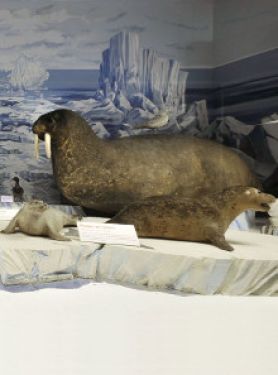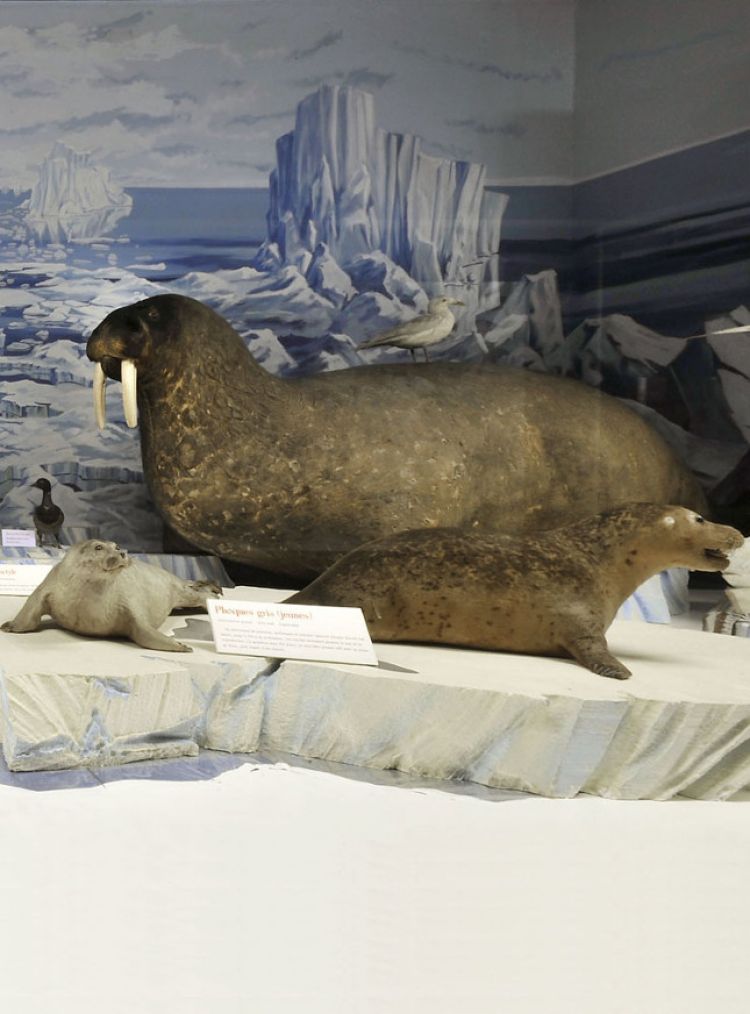Walrus (Odobenus rosmarus)

Walruses live in the cold seas of the northern hemisphere. Recognisable by their two large tusks, they are the second-largest members of the seal family, after the elephant seal. Walruses are gregarious creatures and groups many thousands of individuals. The specimen kept in the Museum is almost 4 metres long, which ranks it among the largest specimens to be found in nature. Some individuals can weigh up to 1,800 kg.
In 1851, Mr. Mehlhose sent the skin of this specimen to the Museum, preserved in salt. Along with a reindeer, a white fox, starfish and molluscs, it was one of the many shipments that this Greenland-based missionary had been sending to the Museum since 1847. At the time the Strasbourg Association of Friends of Natural History paid 150 francs for it. The years between 1840 and 1850 were particularly fruitful ones for acquisitions of specimens from cold countries such as Norway, Sweden, Denmark and Russia.
